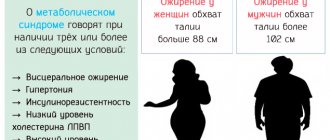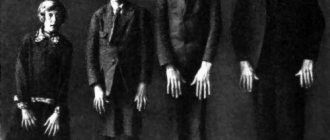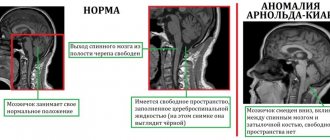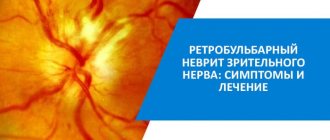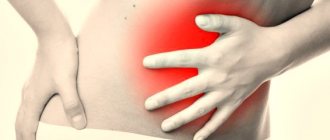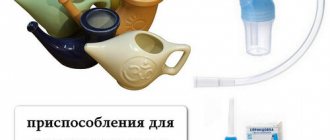September 24, 2019
822
0
5 out of 5
Vertebral artery syndrome is a collective term that unites a number of different diseases of a vascular, vestibular, traumatic, vegetative nature, accompanied by a narrowing of one or both vertebral arteries. This is accompanied by painful migraines, impaired hearing, vision, consciousness and can lead to stroke, disability, irreversible damage to the brain and disability.
Patients with this diagnosis fall out of the usual rhythm of life for a long time, lose their ability to work and require qualified treatment. But for it to be successful, it is important to accurately determine the cause of the development of vertebral artery syndrome and act on it. SL Clinic specialists will help you do this. With us you will receive a consultation and will be able to undergo all the necessary diagnostic procedures. As a result, we will determine exactly what caused the problem and develop the optimal treatment tactics.
Vertebral artery syndrome: what it is and the reasons for its development
Two large arteries, starting in the upper part of the chest, passing through the lumen of the cervical vertebra into the bone canal, into the skull and then merging into one, are called vertebral arteries. They provide 15–30% of the brain's blood needs and are primarily responsible for feeding the cerebellum, inner ear, hypothalamus, thalamus, midbrain and medulla oblongata, as well as some other structures. The deterioration of their blood supply, as well as irritation by the deformed walls of the vessels of nearby nerve plexuses provokes the development of a number of symptoms, the totality of which is called vertebral artery syndrome (VAS).
The left artery is most often affected. The main cause of pathology is considered to be injuries and diseases of the cervical spine:
- osteochondrosis;
- spondylosis;
- vertebral instability;
- intervertebral hernia and protrusion;
- muscle spasms;
- basilar impression;
- scoliosis;
- tumors of various origins, including hemangiomas;
- subluxations of the vertebral processes;
- congenital structural anomalies (the presence of additional cervical ribs, fibromuscular dysplasia, Kimmerly, Powers anomalies, arterial structures, their tortuosity, the presence of kinks, etc.).
Thrombosis and atherosclerosis play an equally important role in the development of vertebral artery syndrome. Also, vascular diseases that can provoke SPA include hypertension, systemic vasculitis, arterial dissection and some others.
In other words, almost anyone can become a victim of the disease. High-risk groups include office workers, athletes and participants in car accidents. Therefore, today it is no longer uncommon for such a diagnosis to be made not only to people who are only about 30 years old, but even to children.
Why do symptoms occur on both sides of the body?
The spinal cord consists of interneurons and many conductive fibers. They form motor and sensory pathways, some of them completely or partially intersecting at different levels. In this case, all or part of the nerve fibers move to the other side of the brain. Therefore, when one half of the spinal cord is affected and damaged, disorders occur not only on the same side of the body, but also on the opposite side.
Motor (motor) nerve fibers form the lateral corticospinal tract; it runs along the entire spinal cord in its lateral columns. Its fibers begin in the cerebral cortex. First, a portion of fibers departs from it and partially intersects, going to the nuclei of the cranial nerves. Then almost all the remaining fibers move to the opposite side; this happens in the lower parts of the brain. Therefore, with unilateral damage to this motor pathway, central paralysis of the same half of the body occurs.
A small portion of motor fibers that are not crossed in the brain forms the anterior corticospinal tract. Its fibers are intended for bilateral innervation of internal organs. This explains the preservation of pelvic functions in unilateral spinal cord injury.
The fibers of deep sensitivity intersect only in the brain, which explains the appearance of corresponding disorders on the side of the spinal cord lesion.
But the fibers responsible for superficial and pain sensitivity intersect at the level of the spinal cord. They gradually move to the opposite side, and the decussation begins 2–3 segments above the level of entry of these fibers into the spinal cord. Therefore, a person with Brown-Séquard syndrome will experience numbness on the other side of the body, starting just below the level of damage to half of the spinal cord.
Types of SPA
The division is based on the causes that provoked the occurrence of vertebral artery syndrome. There are 4 main forms of spa:
- compression – is a consequence of mechanical compression of the arterial walls by surrounding structures;
- irritative - occurs due to spasm of the walls of blood vessels, which is a consequence of vertebral irritation of the nerve endings;
- angiospastic – also accompanied by vascular spasms, but due to stimulation of receptors located at the level of the affected segment of the cervical spine;
- mixed – characterized by the effect on the vertebral arteries of a combination of different factors.
But pathology rarely follows strictly one type. Mixed disorders are usually observed. Most often, compression-irritative and reflex-angiospastic forms are diagnosed.
In the first case, the disruption of blood flow is caused by mechanical compression of the artery itself and the nerve plexuses. In the second, the blood vessel spasms reflexively after irritation of the spinal nerves by intervertebral discs or due to other pathological processes in the spine.
Clinical manifestations
As already mentioned, vertebral artery syndrome can occur in different ways, accompanied by symptoms of autonomic and vascular disorders. The following clinical types of pathology are distinguished:
- Basilar migraine.
- Posterior cervical sympathetic syndrome.
- Vestibulocochlear syndrome.
- Syndrome of autonomic changes.
- Drop attacks.
- Ophthalmic syndrome.
- Transient ischemic attacks.
- Syncopal vertebral syndrome.
Features of the course
There are 2 stages in the development of pathology and circulatory disorders: functional and organic. At the first or diastolic stage, the following are noted:
- cochleovestibular disorders (frequent dizziness, instability, swaying when standing or walking);
- headaches of a burning, throbbing, aching nature;
- visual impairment, manifested by darkening of the eyes, the appearance of sparks, dots, spots in front of the eyes, a burning sensation;
- sometimes hearing loss.
Headache attacks tend to get worse over time. They usually develop with sudden movements of the neck or prolonged forced position of the head.
As a result of pathological changes, arterial spasms occur, which become stronger and longer lasting. This leads to the formation of foci of ischemia, in areas that experience a long-term lack of arterial blood supply. This transfers the disease to the second stage - organic or ischemic.
Due to persistent disruption of the blood supply to the brain, the following occurs:
- severe headaches, dizziness, which can provoke bouts of vomiting;
- impaired coordination of movements;
- hearing loss and ringing in the ears;
- visual disturbances up to loss of entire fields;
- changes in articulation;
- severe neck pain;
- sudden fall without loss of consciousness (drop attacks);
- loss of consciousness for 2–15 minutes.
These symptoms appear or intensify more often with sudden tilts or turns of the head and weaken after assuming a horizontal position. After an attack, a person suffers from general weakness, tinnitus, and flashing spots before the eyes (photopsia).
Thus, the list of symptoms common to all those suffering from vertebral artery syndrome looks like. But each form of violation occurs with its own characteristics. In particular, for the compression-irritative form it is typical:
- paroxysmal headaches with loss of sensitivity in certain areas of the face;
- pain in the neck muscles and a crunching sound that appears when turning or tilting the head;
- visual impairment;
- hearing impairment;
- violations of coordination, stability, coordination of movements;
- mood lability;
- drop attacks.
With the reflex-angiospastic form, the clinical picture is dominated by:
- headaches that develop due to pressure changes or changes in weather conditions;
- episodes of loss of consciousness during sudden movements;
- visual disturbances;
- hearing impairment, dizziness;
- sore throat, perversion of taste, cough;
- deviations in the psycho-emotional state: hysterics, increased anxiety levels.
Clinical forms of vertebral artery syndrome
Specific signs may predominate in the clinical picture, while others will be present but in a less pronounced form. Depending on this, it is diagnosed:
- Bare-Lieu syndrome (cervical migraine) – shooting, throbbing, aching headaches predominate. Initially, they arise in the area of the transition of the neck to the back of the head and quickly spread to the parietal, temporal and frontal parts of the head. Most often, migraines appear in the morning as a result of sleeping in an uncomfortable position and intensify with sudden movements, walking, running, and vibration. It can be combined with visual impairment and balance.
- Basilar migraine - manifests itself as migraine-like pain, combined with disturbances in vision, speech, coordination of movements, dizziness, and tinnitus. At the peak of the attack, the pain is concentrated in the back of the head and can lead to nausea with vomiting or loss of consciousness.
- Vestibulo-atactic syndrome - dizziness, disturbances in stability, balance, attacks of nausea that can lead to vomiting, and darkening of the eyes come first. They tend to intensify when the uncomfortable position of the head is maintained for a long time or when the neck moves suddenly.
- Cochleo-vestibular syndrome - there is a decrease in hearing, deterioration in the understanding of whispers, a persistent and prolonged roar in the ears, which can acquire different tones when the position of the head changes. This is often accompanied by impaired sensitivity in different parts of the face and attacks of dizziness.
- Ophthalmological syndrome - vision disorders predominate in the clinic, which is manifested by rapid eye fatigue, photopsia, rapid loss of clarity when reading, working with a computer and other similar strains on the eyes. Loss of visual fields is often observed, especially with an awkward position of the head. This may be accompanied by the presence of a feeling of a foreign body in the eye, pain, lacrimation, which can easily be confused with viral or allergic conjunctivitis.
- Autonomic disorders usually complement one or another syndrome described above. Patients are concerned about cold feet, hot flashes, increased sweating, which is accompanied by general chills, and signs of urticaria in the area of minor skin lesions. Laryngopharyngeal disorders may also be present.
- Ischemic attacks - against the background of transient circulatory disorders, short-term motor disorders, disturbances in the functioning of the sensory organs occur, up to complete loss of vision, deterioration of speech, coordination of movements, the ability to swallow, dizziness with nausea and vomiting.
- Unterharnscheidt syndrome - manifested by loss of consciousness with a sudden movement of the neck or after maintaining an uncomfortable position of the head for a long time.
It is obvious that vertebral artery syndrome has a very severe course and significantly reduces the quality of life. And the great similarity between the manifestations of different forms of pathology complicates the diagnosis of the root causes. But the doctors at SL Clinic are ready for difficulties. They regularly encounter such disorders, are able to competently analyze the existing symptoms and, using modern diagnostic methods, differentiate the source of the problems.
Classification
Depending on the cause that contributed to the appearance of Brown-Séquard syndrome, the following types are distinguished:
- tumor;
- traumatic;
- hematological;
- infectious-inflammatory.
Brown-Séquard syndrome can have 3 variants of its course; accordingly, its symptoms will differ. The classification is:
- Classic option. Symptoms are characteristic of this disease. The disease proceeds without dangerous consequences and complications.
- Inverted. The symptoms are characteristic of Brown-Séquard syndrome, but all the signs that appeared on the diseased side are transferred to the healthy part of the body.
- Partial. Symptoms may be absent or mild and appear only in some parts of the body, for example, in the limbs.
The latter variant of the course of the disease can be found very rarely; more often the disease proceeds according to the classical variant.
Diagnostics
Today, vertebral artery syndrome is diagnosed more often than it actually occurs. This is due to insufficient understanding of doctors about the specifics of its course. Therefore, the inflammatory process in the inner ear can be mistaken for SPA.
For the purpose of correct diagnosis, doctors at SL Clinic prescribe a set of tests to patients and at the same time carry out long-term monitoring of the peculiarities of the course of SPA. The nature of the existing complaints, a thorough survey and examination of the patient allow our specialists to clearly identify the set of signs and determine how much they correspond to the above 9 clinical forms of SPA.
During the examination, the doctor will definitely find out the degree of pain in the scalp, since often the slightest touch to it provokes a pronounced increase in pain. Muscle tension and the presence or absence of discomfort when pressing on certain points on the back of the neck are also determined.
To detect vascular diseases, spinal pathologies and other disorders, the following must be carried out:
- radiography of the spine;
- MRI of the cervical spine;
- Ultrasound scanning of neck vessels;
- stabilometry;
- otoneurological examination;
- UAC;
- blood chemistry.
During dynamic observation, new data are discovered that help adjust the initially prescribed treatment and increase its effectiveness. This approach to spa therapy ensures its maximum effectiveness, reducing the risk of complications and reducing the frequency of attacks.
Diagnostic tests
Since vestibular-trunk syndrome is a complication of the underlying disease, if it is suspected, a number of studies are carried out. Patients are examined by two doctors at once - an ENT specialist and a neurologist. A thorough history is taken and a series of tests are carried out to assess the severity of the clinical manifestations of coordination disorder. Diagnosis is aimed at identifying the root cause. Examination of the outer ear rarely gives significant results, so magnetic resonance therapy is required, which allows us to exclude the presence of morphological changes in the brain and its membranes. If a patient has a history of cardiovascular disease, hematological tests, ultrasound and electrocardiograms will be required.
Conservative treatment of vertebral artery syndrome
Since SPA can be caused by various factors, treatment can include a wide range of different techniques and procedures. They are mainly aimed at improving blood flow in the vertebral arteries and eliminating the compression effect on the vessels.
At the same time, therapy can be carried out at home only at the diastolic stage of the disease, when the patient’s condition does not cause serious concern. But a weekly visit to a neurologist is recommended to assess the dynamics of changes and, if necessary, adjust the prescribed treatment.
In the organic stage and the occurrence of ischemic attacks, treatment is carried out in a hospital setting. This will allow you to recognize the signs of an incipient stroke and provide qualified medical care to avoid the development of severe complications.
As part of the treatment of vertebral artery syndrome, patients are prescribed:
- drug therapy;
- physiotherapy;
- manual therapy;
- Exercise therapy.
For each patient, treatment tactics are developed individually, based on what diseases are detected and what causes the occurrence of SPA.
Drug therapy
Drug treatment plays a major role in the treatment of SPA. Depending on the form of its occurrence and the cause of its development, patients are prescribed a set of medications, including those that help eliminate unpleasant symptoms. Therefore, patients receive:
- Anti-inflammatory therapy. Because during SPA, swelling occurs as a result of mechanical compression of arterial vessels and a decrease in the intensity of blood outflow through the veins, since they are the first to suffer from compression by surrounding structures. Therefore, in order for all subsequent therapy to be effective, it is first necessary to carry out decongestant and anti-inflammatory therapy with drugs of the NSAID group and agents that improve venous blood flow.
- A combination of drugs to normalize blood flow in arterial vessels. Vasoactive agents, α-blockers, calcium antagonists and purine derivatives are widely used in RAS, since it is almost always accompanied by deterioration of hemodynamics. Otherwise, there is a high risk of developing vertebrobasilar insufficiency and subsequently stroke.
- Neuroprotective treatment. It presents the administration of cholinergic drugs and neuroprotectors in forms for intravenous and oral use. Thanks to them, it is possible to provide nutrition to neurons, protect them from the effects of negative factors, improve cerebral hemodynamics and activate the regeneration processes of damaged nerve tissues. This provides effective prevention of the occurrence of vertebrobasilar insufficiency and subsequent complications. It is especially important for patients suffering from ischemic attacks, drop attacks and other serious manifestations of spasm.
- Metabolic therapy. In order to improve the quality of cerebral circulation, medications from the cardiology group are prescribed. They promote active nutrition of ischemic foci and produce a stimulating effect on the central nervous system, which increases the effectiveness of the entire treatment as a whole. Thanks to taking such drugs, patients are less susceptible to stress, notice an increase in physical activity and a decrease in signs of impaired coordination of movements. Hot flashes, chills, increased sweating, and cold feet are eliminated.
The effectiveness of drug therapy is monitored through regular Doppler ultrasound and blood tests. In order to eliminate the symptoms of the disease, patients are prescribed to take muscle relaxants, histamine-like drugs, anti-migraine drugs, antispasmodics and vitamins.
For severe neck pain caused by compression of nerve endings, lidocaine or novocaine blockade can be performed. The procedure is performed exclusively in a medical facility in a completely sterile room. It involves injecting an anesthetic solution into precisely defined points located near the spine. Thanks to the blockade, it is possible to completely eliminate the pain syndrome in a matter of minutes, but they do not have any therapeutic effect.
Physiotherapy
To normalize the condition of the walls of blood vessels, the central nervous system, increase the intensity of blood flow and improve metabolic processes, patients are recommended to take a course:
- magnetic therapy;
- electrophoresis;
- UHF therapy;
- diadynamic therapy;
- ultraphonophoresis.
Which procedures will give the best result and how many of them will need to be done is determined individually.
Manual therapy
Manual therapy sessions can help relieve muscle spasms, help restore the normal position of the cervical vertebrae and eliminate compression of blood vessels. They use gentle techniques, especially post-isometric relaxation. A light relaxing massage also has a beneficial effect. But such procedures should only be carried out by a specialist, since any careless movement or pressure in the wrong place can cause a sharp deterioration in the condition.
Exercise therapy
A specially selected set of therapeutic exercises will help relax the neck muscles and increase the effectiveness of drug therapy. Any exercise should be performed smoothly, without jerking or wide swing.
The patient receives a list of indicated exercises from a neurologist, and in difficult cases from a physical therapy specialist, under whose guidance he will need to take several classes. You should not start doing therapeutic exercises on your own, since for a number of conditions that provoke spasm, it is contraindicated.
In some cases, patients are recommended to wear a Chance collar. This orthopedic device will help reduce the load on the cervical spine.
How dangerous is the condition?
Vertebrogenic compression carries a high risk of significant entrapment of the artery, leading to fainting conditions.
Stroke of the brain or spinal cord also occurs in patients with PA syndrome. The most serious consequence of a pinched artery is disability caused by paralysis of individual parts of the body.
Signs of deterioration:
- Speech impairment;
- Vomit;
- Temporary loss of vision.
Surgical treatment of vertebral artery syndrome
Unfortunately, conservative therapy methods do not always produce positive results. If the patient's condition continues to deteriorate or there is a risk of developing serious complications, surgical treatment may be recommended.
The goals of the operation are to restore blood circulation in the affected vessels. This can be achieved through:
- Decompression of the vertebral artery is carried out using a wide variety of methods, which are selected based on MRI results: removal of intervertebral disc protrusions using cold plasma, laser or radio wave nucleoplasty;
- removal of herniated intervertebral discs using microdiscectomy, endoscopic operations, etc.;
- removal of osteophytes, uncovertebral growths;
- surgical treatment of scoliosis through the installation of special metal structures.
The choice of a specific technique is made by the surgeon based on the nature of the existing disorders. Sometimes their combination is required to ensure high effectiveness of surgical intervention.
Etiology of the disease
Doctors divided the reasons that cause compression of the arterial vessels supplying the brain into two groups:
- nonvertebrogenic (caused by atherosclerotic changes in the arterial plexuses or an abnormal change in the size of the vessel towards their reduction);
- vertebrogenic (associated with the development of degenerative changes in different parts of the spinal column that occur against the background of injuries, the development of cervical osteochondrosis, mixing of the vertebrae or the growth of an intervertebral hernia).
According to medical statistics, the most common cause of the development of this syndrome is cervical osteochondrosis. The fact is that, rising to the brain, the blood artery passes through a kind of canal consisting of six vertebrae (from the first to the sixth), and osteochondrosis, accompanied by the deposition of calcium salts, causes deformation of these very structures, as a result of which the canal becomes significantly narrower, causing compression of blood vessels causes destruction of intervertebral discs and displacement of the cervical vertebrae. All of the above factors irritate the nerve fibers of the sympathetic plexus, which, in turn, causes spasm of the arterial vessel throughout the entire bone column and causes disruption of blood circulation.
SPA treatment at SL Clinic
At SL Clinic you will receive qualified advice. In the shortest possible time, we will be able to understand the reasons for the disturbance of your condition and the occurrence of painful migraines, determine the form of the spa, select the optimal treatment regimen and, if necessary, carry out the best surgical intervention.
If you contact us in the early stages of the disease, it is possible to transfer it to a state of stable remission. During it, you will no longer be bothered by the painful manifestations of SPA, and you will be able to lead an absolutely normal lifestyle.
But even in severe cases, doctors at SL Clinic will not leave you alone with the disease. We will do everything possible to achieve a significant improvement in your condition and overall quality of life. All operations with this diagnosis are performed in neurosurgical departments.
The cost of treatment of vertebral artery syndrome without surgery starts from 120,000 rubles and depends on: - procedures that will be included in the treatment; — Clinic and ward class (where the operation will be performed). The price includes: - Stay at the clinic; - Medications. — Blockades; — Traction treatment; — Physiotherapy. All clinic services and costs are listed in the price list.
SL Clinic specializes in performing various types of neurosurgical interventions and is ready to offer you European-level medicine in Moscow. We have the best modern equipment, and our neurosurgeons have extensive experience and master advanced techniques for treating spinal diseases. Therefore, our success rates for operations are consistently at extremely high positions.
Don’t hesitate, don’t wait until the SPA completely poisons your life and leads to the development of irreversible consequences, contact SL Clinic now. We will help you achieve the longest possible remission and get rid of the obsessive fear of the sudden onset of a new attack.
Preventive measures to maintain health
The development of the syndrome is minimized by engaging in sports from an early age, as well as maintaining a healthy sleep and wakefulness regime.
The need for office workers, drivers, and watchmen to assume the same body position for a long time requires periodic warm-ups.
It is enough to get up from your seat once an hour to prevent the development of stagnation.
It is very important to relieve periodic neck spasm, which also interferes with everyday life due to decreased mental reaction.
Conditions for maintaining health:
- Frequent changes in body position during sleep;
- Carrying out cervical exercises during the lunch break;
- Avoiding frequent consumption of fatty foods.
To prevent the cervical artery from being pinched during sleep, the patient needs to purchase an orthopedic pillow that does not create tension in the axial part of the skeleton.
If the back part also suffers, then it is recommended to purchase mattresses of a similar design.
It is necessary to avoid an unnatural position of the body, otherwise pinching of the artery is possible, which can cause a sharp jump in pressure, contraindicated for hypertensive patients.
Stages of osteochondrosis
